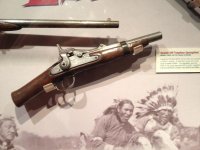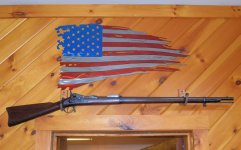Stevie
Member
As far as ammunition for old or new Trapdoor rifles/carbines goes....the reloading manuals I own have three levels of load info for .45-70
Trapdoors and other 'weak' actions have the lightest loads listed for a reason. Brand new trapdoors still require lighter loads same as the original rifles.
Since I own two old trapdoors in .45-70 and a Browning 1886 carbine in same caliber...I just load .45-70 to 'trapdoor spec'. The Browning can undoubtedly handle heavier loads than the old original trapdoors...however the lighter loadings are much more pleasant to shoot in any of my three rifles.
I have no real use for super-duty .45-70 ammo. The cartridge works very well at or near original ballistics.
Trapdoors and other 'weak' actions have the lightest loads listed for a reason. Brand new trapdoors still require lighter loads same as the original rifles.
Since I own two old trapdoors in .45-70 and a Browning 1886 carbine in same caliber...I just load .45-70 to 'trapdoor spec'. The Browning can undoubtedly handle heavier loads than the old original trapdoors...however the lighter loadings are much more pleasant to shoot in any of my three rifles.
I have no real use for super-duty .45-70 ammo. The cartridge works very well at or near original ballistics.



